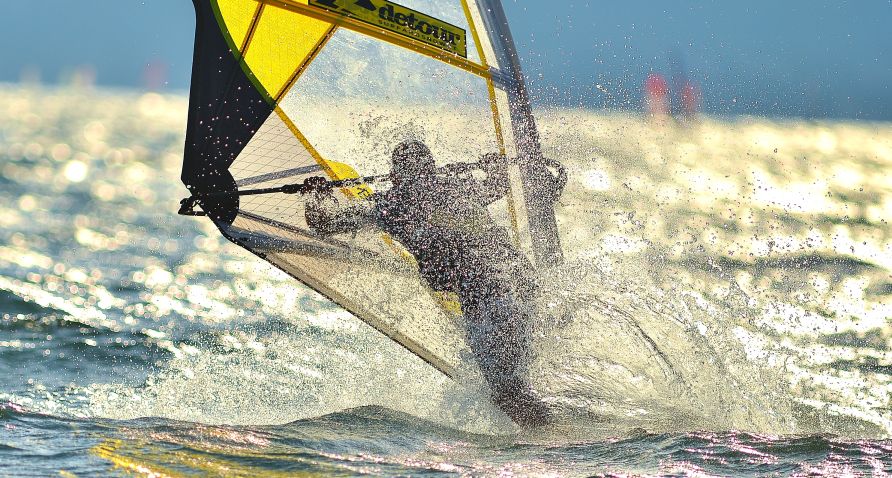Many of you will have happened to be in a spot, seeing a windsurfer performing a freestyle maneuver, and wondering which maneuver he/she is landing. It may be simple curiosity, but more often you would like to learn it, and then you need to know its name, to look for instructional material that explains it clearly. We have therefore decided to classify them and create a catalog of freestyle maneuvers to help you, to get that purpose.
Windsurfing: freestyle maneuvers catalog
Once upon a time, our "ancestors", that is the first pioneers who ventured into the practice of windsurfing in the late 70's and 80's, didn't have many problems ..... A board and a sail were good for all occasions, they went riding on one side, and back to the other one, and basically they only had the problem of changing direction from time to time. Still, they lived happily, probably because of the experimental, and indeed pioneering approach that characterized windsurfing, at those times, and that made each session a real adventure.
Today, windsurfing has become a more complex discipline, equipment is produced in many possible variations, and a quantity of maneuvers has been created that a lifetime is not enough to learn all of them. This made windsurfing a less simple sport to approach, but perhaps even more stimulating and intriguing.
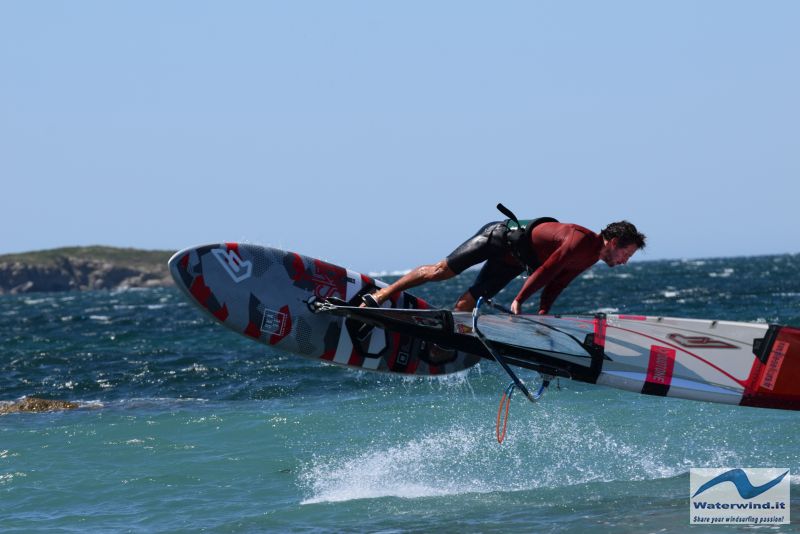
To help you put some order to the maze of invented freestyle maneuvers, we thought about creating this article.
We begin to classify and briefly describe the main maneuvers. It must be clear that the intention of this article is not to explain how to perform maneuvers (body movements and stance, tricks, etc.), but only to provide a list, with a concise description of the maneuver to recognize it. If you like the maneuver, you'll have to look for a good manual, or a good instructor, to learn it.
Anyway, we would like you to give us a helping hand. Whether you are professional athletes, very good riders, or mid-level amateur surfers, we ask you to indicate a maneuver you like, that you know how to perform, or that you are learning, sending us a brief description, with at least one picture of you in action, and even your video while you perform it. Given the success which Waterwind is enjoying, in Italy and worldwide, for you it will also be a good opportunity to make you notice/know, and to do something useful for the whole windsurfers community.
The article is a work in progress, and will be continually updated/enriched. If you have suggestions/corrections, or reflections to be formulated, please post them in the comments at the end of the article. If the maneuver that you know how to do, is already included among those listed in the article, post a comment below, with a photo of you, or a video, while you perform it!
Well, now no more talk, and let's start.
Maneuvers treated, so far: Vulcan, Spock, Puneta, Willy Skipper, Shaka, Flaka, Diablo, Grubby, E Slider, Kono, Switch Kono, Burner, Funnel, Bob, Chacho.
Vulcan (Air Jibe)
It is a maneuver that allows a change of direction when riding, simultaneously with a jump. During the jump, the board rotates 180 degrees (the stern enters in the wind), and so does the sail (the mast remains in the wind). It is a sort of aerial jibe (the body passes upwind to the sail), with a switch stance output.

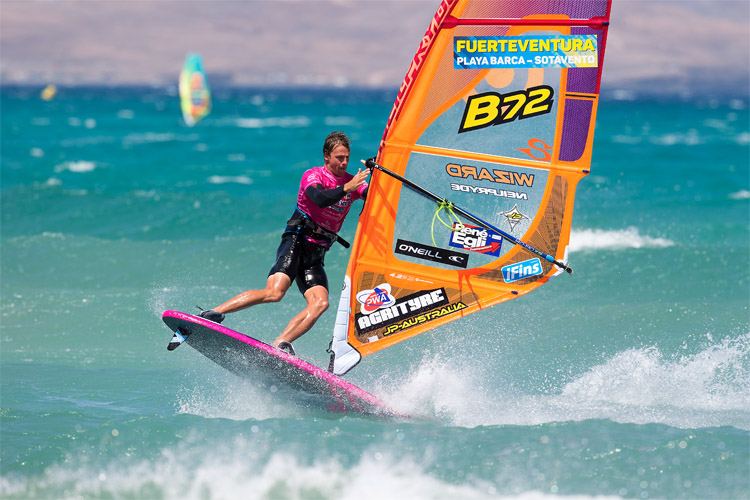
Spock
In the maneuver you enter and exit, keeping the same direction when riding. The board rotates 360 degrees during the maneuver. The start is like the Vulcan, but when the jump is taken, the sail only rotates by almost 90 degrees (not 180, like in the Vulcan). When the rider lands from the jump in switch stance, he/she continues to rotate the board 180 degrees, and simultaneously brings the sail (which reverses the direction of rotation) upwind, making a rotation of 450 degrees, with a movement (even of the hands on the boom) similar to that of a Heli Tack. The Spock can also be performed Clew First, that is entering with this sail setting in the maneuver.
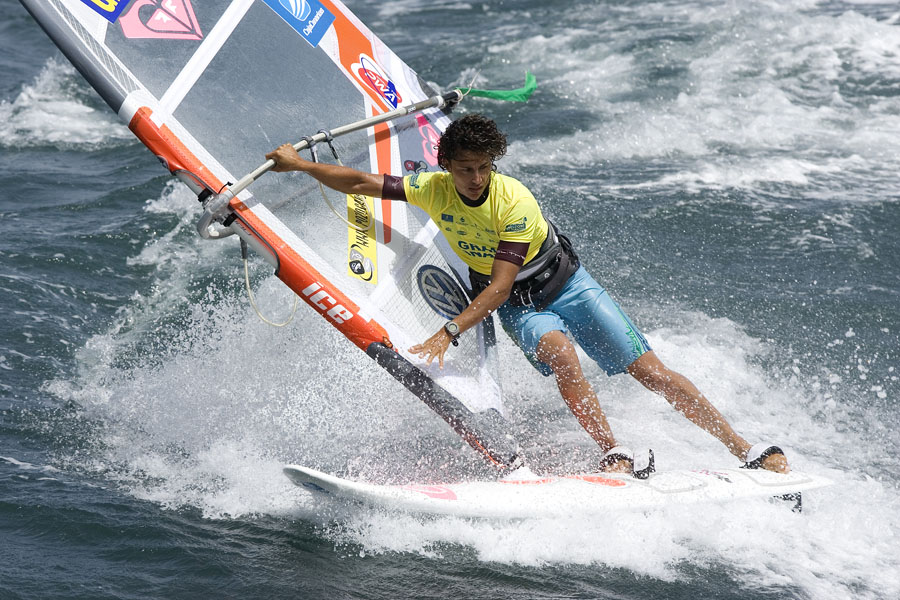
Puneta
The Puneta has several similarities with the Spock, at least, in some initial movements. Unlike the Spock, it involves a change of direction when riding. The beginning of maneuver is done in switch stance (difference with respect to the Spock). A hop chop is then performed, during which the board is rotated 180 degrees, with the stern entering the wind, and at the same time the sail rotates a little over 90 degrees, with the mast remaining in the wind. At this point, the rider is with the board sliding backwards, in a condition similar to the Spock, but he/she is not in switch. The board continues to rotate another 180 degrees (total 360, so far), with the board bow entering into the wind, and with the sail, which reverses the rotation, and rotates 270 degrees, passing upwind to the rider, while the board performs a last 180 degree rotation (total 540). The rider, therefore, finds himself coming out of the maneuver in opposite direction with respect to the entry one, and with normal stance.
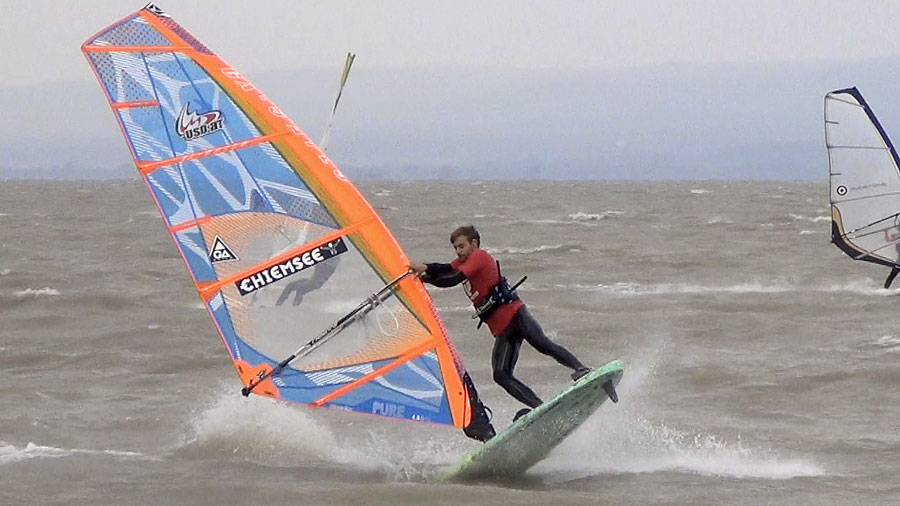
Willy Skipper
It is one of the first freestyle maneuvers, invented several years ago. The maneuver leads to a sudden change of direction. After taking the back foot off the strap, the rider performs a hop chop, rotating the board 180 degrees in the air, with the stern entering the wind. During the jump also the front foot is extracted from the strap. The rider then lands with the board on the water, without having changed the sail orientation. But as the board continues to move forward by inertia, the sail is also rotated 180 degrees, so as to allow the rider to resume navigation on the opposite tack.
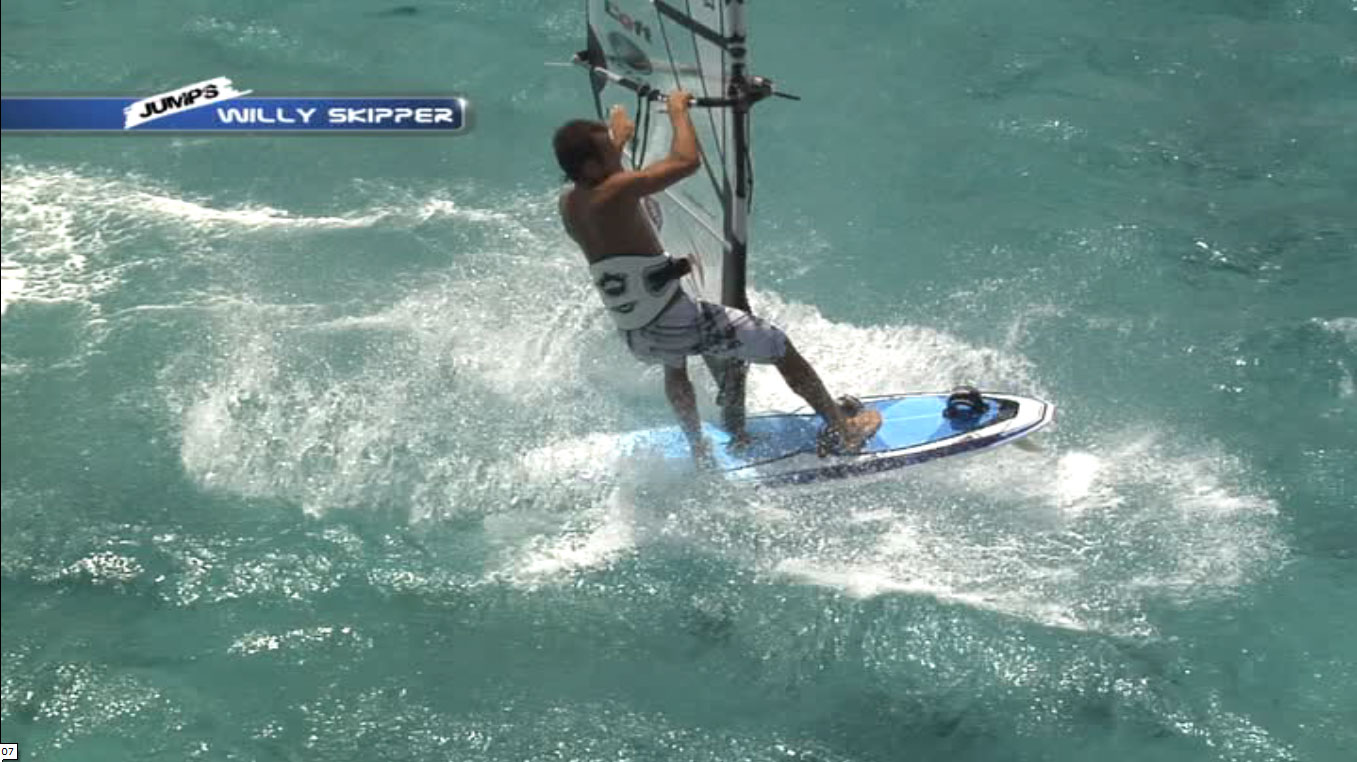
Central part omitted. The reading of the main part of this article is reserved to Waterwind Supporters. To become a Supporter, click here.
Chacho
A nice move, with some variations, which requires the combination of different skills. It does not involve a change of direction while riding. It has some variations (Air Chacho, and Switch Chacho). In the classic version, the rider starts maneuvering in normal stance, performs a hop chop, and makes the board and the sail do a first 180-degree rotation. The board passes with the stern in the wind. The sail passes with the clew in the wind. At the same time, the rider passes over the sail clew, changing the handle on the boom, as in the Duck Jibe (in the Pedrani's video version, below, moreover the boom is taken with one hand). Once the board touches the water again (after the first 180 degree rotation), the rider is in switch; then, performs another board rotation (this time the bow enters the wind), while the sail is also rotated 180 degrees, passing from leeward to windward of the rider. At the end of these two further rotations, the rider is in normal stance, with the board in the same direction of the move beginning, but backwinded to the sail (or clew first, if the sail continues to rotate another 180 degrees): the rider will have to rotate the sail another 360 degrees (if he/she was backwinded), bringing the clew in the wind, to continue navigation as before the maneuver. Below, you can see a video in which the maneuver is performed by Mattia Pedrani. In this video taken from Continentseven.com, you can admire Gollito Estredo masterfully performing the air variant (Air Chacho).
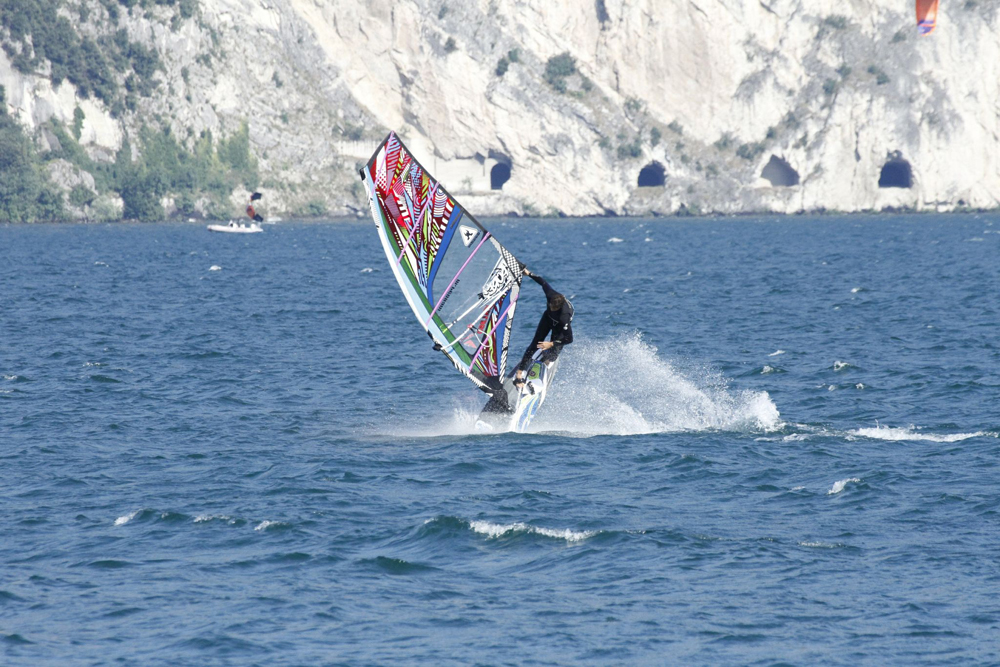
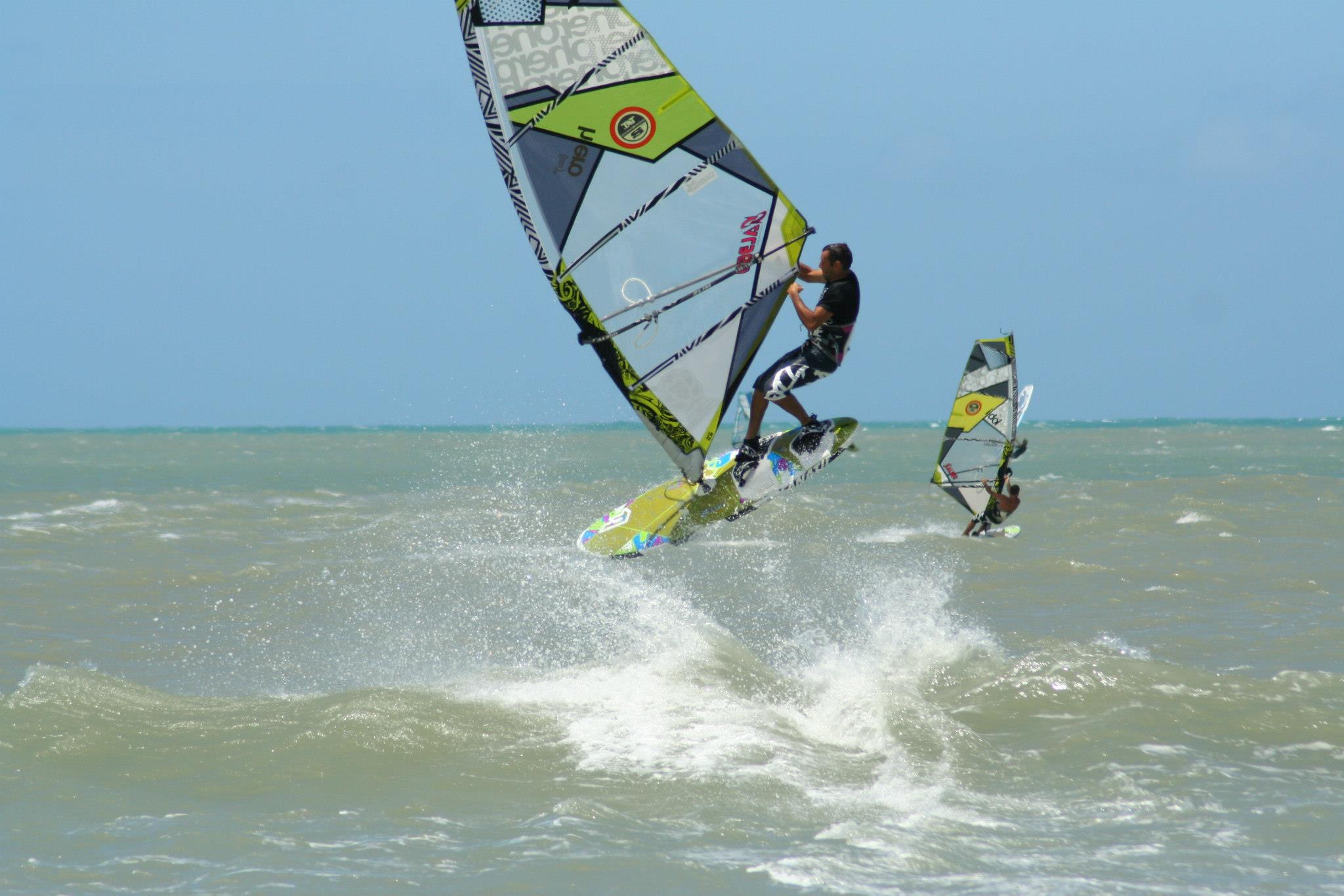
Add your move...
Hang loose. Fabio
Without your Support, Waterwind wouldn't exist. Become our supporter!
If you want to advertise with us, read here, or contact us.
Collaborate with us. Read here!
Buy our Gadgets! Visit our YouTube channel!




